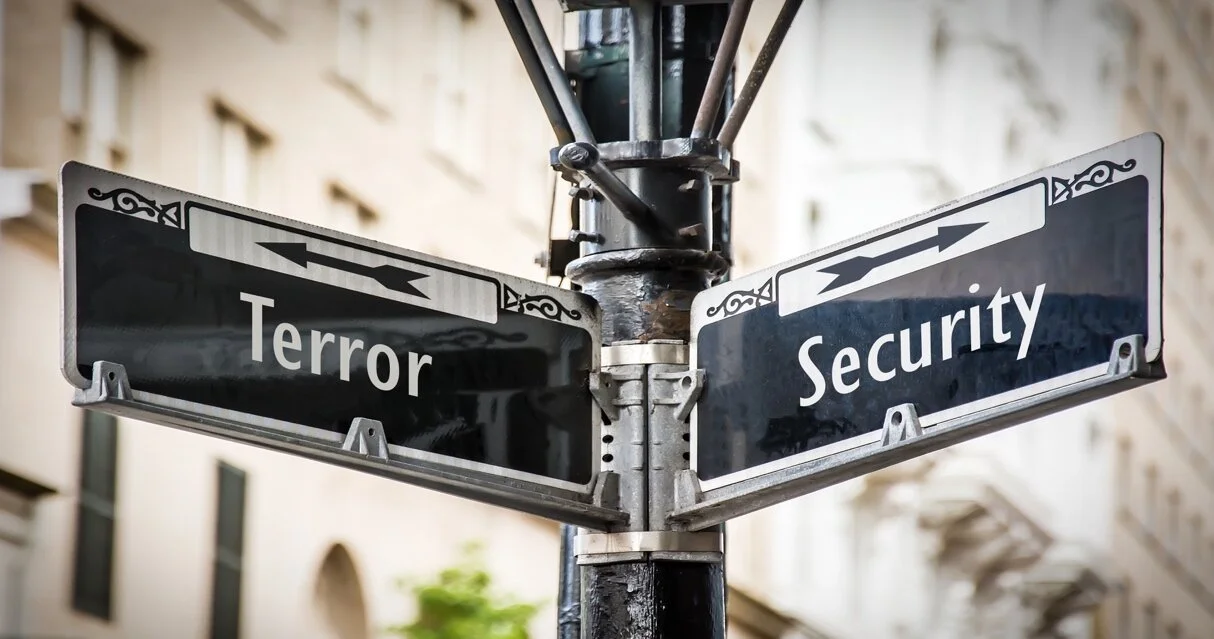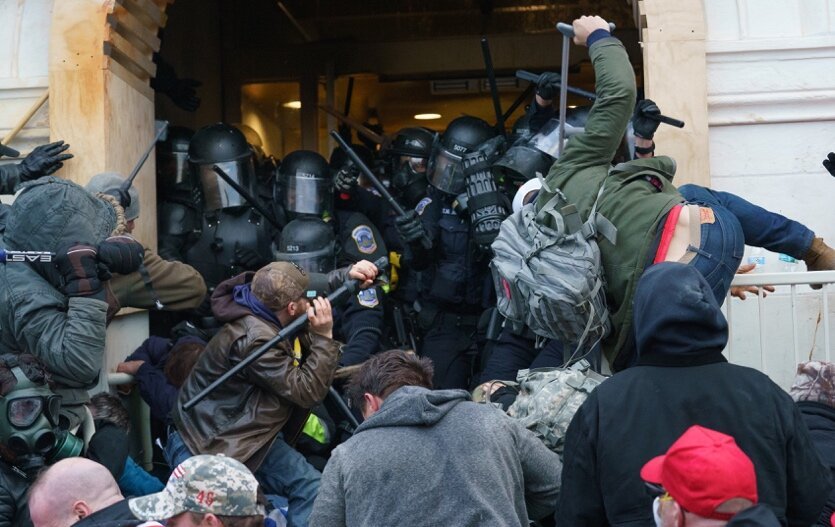Does Your Protective Intelligence Program Come Full Circle?
Often we may believe that having a protective intelligence program is the key to preventing unthinkable acts of violence. Actually, it’s just the engine that refines all the raw data that goes into your intelligence program. Hopefully, it’s running continuously in the background and allowing you to make important decisions along the way – before it’s too late to make a difference.
Admittedly, sometimes that’s easier said than done, but when we speak of actionable intelligence, the very words imply taking action. Often, this is where we need to advance our programs and ensure our efforts are able to come full circle to prevent an attack or crime.
We recently saw an unfortunate example of a protective intelligence program that did not come full circle with correct and timely decisions when Capitol Police officers on the front lines were overwhelmed by an angry and highly-charged mob determined to enter the Capitol where many acted with hostile intentions. Was this really a surprise based on all the shared intelligence leading up to the “rally” held near the Capitol?
Where did the breakdown occur in not providing the uniformed officers with the information and resources they needed to defend themselves and the Capitol, our U.S. elected and appointed representatives, and a sitting Vice President who was in the Capitol and targeted by this mob?
Many reports and articles have been written and they will continue as they outline the mistakes and missed opportunities during the attack. Resignations have been handed in and there has been lots of finger-pointing as Congressional hearings continue their investigations. But the bottom line is: Capitol Police leadership (and others who had the coordination and decision authority with all major law enforcement and domestic intelligence departments in the District and across the country) should not have been caught off guard in 2021 at our nation’s Capitol.
These officers were forced to fight gallantly against our own citizens to provide those inside valuable time to seek secure shelter, establish a barricade, or be led to safety by other Capitol Police officers and U.S. Secret Service agents.
The outcome was a failure to provide available timely assets to the Capitol Police to prevent and adequately defend from this attack and the avoidable loss of life, in addition to the many physically and emotionally injured police officers.
For decades now we’ve witnessed far too many school shootings, disgruntled employees returning to their workplaces determined to kill, and domestic violence where murder is far too often the outcome. And unfortunately, we are also seeing a significant surge in gun violence in the U.S. and around the world.
In some cases, there are signs but, as we have witnessed, those signs don’t always materialize with specific and actionable intelligence in time to stop the violence, or even minimize it. In other cases, it might be a failure to connect the intelligence dots or there is a failure to report or act in time. It can be complicated.
Other complicating factors may include limited legal avenues and/or evidence to effectively investigate those behind threats as they materialize. This is especially difficult if they haven’t committed a crime yet, and our policing and judicial systems are not adequately designed for simply “monitoring” suspicious people.
And this is where our freedoms and civil liberties can oddly and sometimes tragically collide with keeping others safe from someone using those same liberties. In these unfortunate cases, our laws and even a country’s constitution can inadvertently become a protective veil between the bad actor/s and their victims, right up until the moment a heinous act is committed. This is where protective intelligence programs can greatly assist with gathering and processing valuable actionable information for law enforcement and hopefully stop the threat before it becomes devastating or deadly.
But this doesn’t mean we don’t keep trying. Most individuals and even groups will make mistakes and leave valuable investigative crumb trails, especially in the area of all things internet. This is why any protective program must include a purpose-built software platform to constantly analyze and process valuable information to aid the human components of the planning and decision process.
When we speak of “actionable intelligence,” the very words imply taking action.
Private sector protective intelligence programs can assist our reduced, strained and stretched law enforcement agencies and help bridge the gap and alert officials with key information to potentially prevent these types of attacks. But they must come full circle and include the critical human decision element.
As organizations and individuals, we can take measured and proactive approaches and apply various increased levels of protection during the investigative and reporting phases. Actively working with local, state and federal law enforcement about concerns which may include (but wouldn’t be limited to):
Sharing the identity of a person/s of interest by issuing a “be-on-the-lookout” (BOLO) to appropriate offices and those close to the persons or property being protected;
Increasing a physical security presence to include armed security officers or close protection officers when needed;
Adding or increasing physical and electronic surveillance and potential barriers around what you’re protecting;
Continuing to collect, examine, investigate, manage and report all forms of communications to include public social media accounts;
Knowing your internal capabilities to manage the information and consider engaging with a third party who has the right protective intelligence software and experience to understand and manage the threat to include person/s of interest (POI) investigations and threats;
Ensuring you don’t become relaxed in reporting new information to key stakeholders, including law enforcement and especially those in the field and who are close to who/what is being protected.
Some of the most important intelligence is gained when neighbors, family members, co-workers and friends report a noticeable change in someone’s behavior that is concerning or even disturbing. Examples might include new or increased anger and hate speech, a dangerous fixation on a person, event, or location, writing or posting violent and/or vulgar material, purchasing or acquiring multiple weapons or large amounts of ammunition, association with individuals of similar concerns, and/or increased episodes of mental health complications.
Generally speaking, when highly suspicious and abnormal behavior is observed, this would be the time to discuss your concerns with others, including mental health professionals and law enforcement. This important information along with other intelligence, can help connect the dots and allow a better threat image to appear before an act of violence.
Some of the extra efforts can be a deterrent or perhaps sound the alarm louder to officials to address the concern vigorously. One death is too many, but the ability to slow or stop the threat before it becomes a mass casualty is paramount. Again, it’s not an all-or-nothing approach.
When law enforcement and intelligence professionals only have a few pieces of information to work with, it may look like a Jackson Pollock painting where details are missing to create a clear picture. Sadly, and far too often after an attack, what materializes out of the tangible evidence and interviews is more of a Rembrandt, where all the remarkable details emerge as an image that could have been used to potentially stop the violence.
Sometimes, unfortunate outcomes are due to the inability of friends, family members and even key officials to believe that someone could be capable of carrying out such an act; right up until the moment they do.
Regardless if a person uses a gun, airplane, bomb, vehicle, knife, or any other means of violence, the outcome often is still the same: innocent casualties and regrets for not being able to stop the threat in time.
While individuals with mental health complications account for many acts of violence, they are not the only cause for concern. In the cases of terrorist acts or by those with extremist views, they are often more methodical and strive for greater impact driven by collective and dangerous ideologies.
This all leads to a growing concern regarding acts of violence from global extremists (including homegrown organizations within many countries) who are capable of committing truly heinous crimes.
As an example, the recent murders in Germany by reported Islamist extremists and some attacks against foreign refugees by German nationalists are adding to the growing tensions between some German citizens and the Islamic communities. These events fuel concerns of organized violence and ideologies that can spread across geographic locations. It was only last year that Germany took the unprecedented action of disbanding one of its most elite military units after substantiating reports of right-wing extremist beliefs within the group. Germany is not the only country struggling to get ahead of this growing risk.
Every time we hear of another senseless murder or attack, regardless of the means of death by the attacker/s, those in the intelligence and law enforcement communities take them personally and see these acts as missed opportunities to save lives. The ability to act will always be one of the last and perhaps the most important element in the cycle of intelligence within any protective intelligence program.
While protective intelligence programs have traditionally been designed to protect people, more programs have evolved to protect property, facilities, supply chains and operations.
Regardless of what you’re protecting, if your program doesn’t include a plan of action or timely coordination with law enforcement to stop an attack in time, what good was the effort to identify the threat to begin with?
Ensure your protective intelligence programs are capable of coming full circle.
— Mike
Note: As a former CIA Special Police Officer and Special Agent, Mr. Trott is a graduate of the Federal Law Enforcement Training Center (FLETC) where his graduating class consisted largely of Capitol Police officers in training before being assigned to the U.S. Capitol.




